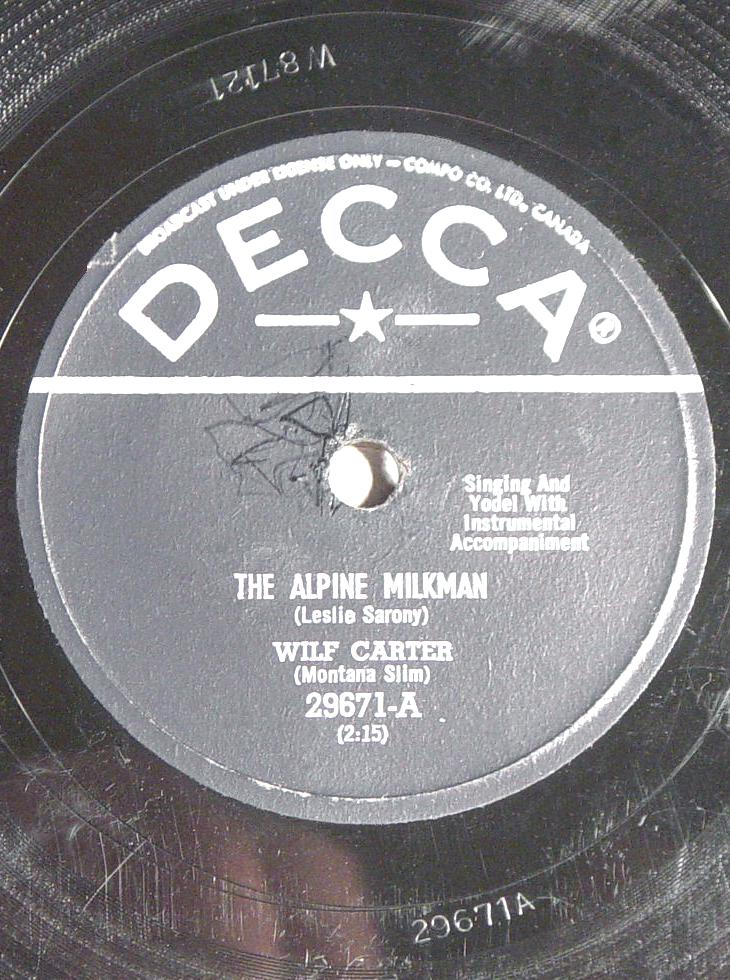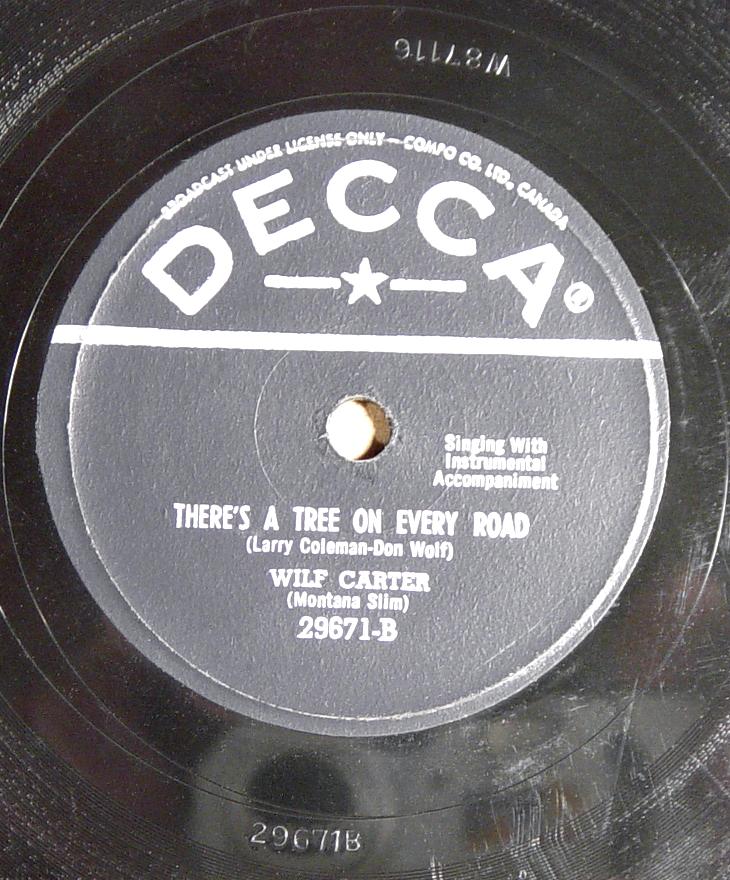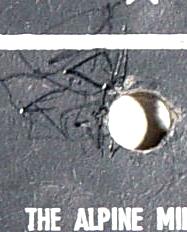In the A label image (above), there are several prominent black marks
plainly visible to the upper left of the spindle hole. Similar marks are
often seen around the spindle holes of used 78rpm records.
These marks were made when someone was trying to place this record
on a turntable, and was having difficulty getting the record centered
on the table.
To place the record on the turntable, the hole in the record had to be
accurately aligned with the spindle. You held the record by the edges
above the turntable, then lowered it onto the turntable. As you did this
the record would hide the spindle from your view. You had to line up
the hole (plainly visible) with the spindle (not visible). The hole in
the record was much too small for you to look through it to locate
the spindle.
Occasionally you would get lucky and the hole in the record would
line up with the spindle, and the record would settle onto the turntable
surface. However, it usually happened that the hole would not find the
spindle on the first try. When this happened, the spindle would hold
the record slightly above the turntable. Then you had to slide the record
around while pressing it down on the spindle, expecting that sooner or
later you would, more or less by chance, move the record to a position
that placed the hole above the spindle.
It was at this time that these marks were made on the record label.
As you moved the record left, right, forward, back, to find the invisible
spindle, the spindle was pressing on the underside label, making these
characteristic random marks.
Such marks are often present on 78rpm record labels, but most of the
time they are not readily visible. Usually the downward pressure on the
record was moderate and the marks on the underside label were not
prominent.
However, sometimes the person putting the record on the table
was impatient, and pressed downward more strongly than usual.
If the occasion was a party, the person might be somewhat under the
influence with impaired reflexes, and the downward pressure placed
on the record might be stronger than usual – at such times the
impaired reflexes of the record changer would tend to make the
search for the spindle more prolonged and more frustrating with
increased downward pressure the usual but unhelpful result. Under
these circumstances there was often less-than-adequate light,
which aggravated the difficulty of aligning the record hole with the
elusive spindle.
Whatever the circumstances, these random-appearing marks around
the spindle hole are often seen on surviving 78rpm records. Once
made, they are permanent.
Similar marks are sometimes seen on 33rpm records. They were
made in the same way, while trying to align the hole with the spindle.
45rpm records do not have these marks.
|


